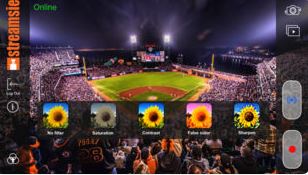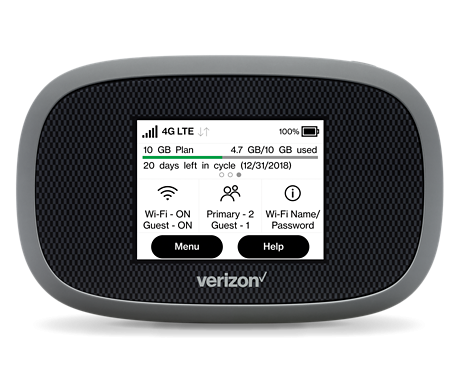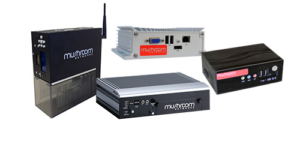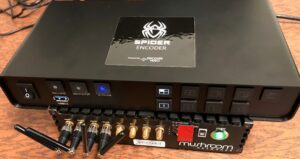When to Use Bonded Cellular Streaming
How is bonded cellular streaming used to get HD 4K quality without WiFi?
Is Your Cellular Connection Enough?
Most of us are used to having Internet access anywhere and anytime. Some of us even seem to have withdrawal symptoms when out of WiFi or cellular range! When connected, we can stream live video from our smartphones to social media services as long as there is enough uplink bandwidth.
Using Facebook, YouTube, and other apps, live streaming is pretty simple.
Using the free Streamsie for iOS, we can stream or record to DEVOS, Arcus, and other services.

But cellphone cameras are not ideal for more professional events, and when you want to use multiple fixed cameras. For more sophisticated streaming, you can use software on your computer such as Streamsie or OBS. Of course, the computer must have adequate Internet access to send the stream. Streaming from your laptop allows you to bring in HDMI, SDI, DVI, Composite and other audio/video sources via USB adapters.
To get a computer to access the Internet via cellular, you can pair it with your smartphone.

Or you can pair it with a stand-alone cellular “hotspot”.
The bandwidth you get with cellular is only what the one connection can provide. In many use cases, this is enough, but the streaming rate used must be limited, typically under 1 Mbps.
Do You Have Enough Bandwidth?
If you have a good connection and LTE service, your uplink bandwidth can exceed 1 Mbps. You might even get 3 Mbps or more. But you might not. And worse, you might get variable uplink speed where it can burst to higher speeds but only provides reliable uplink speed under 1 Mbps.
Using a consumer-class cellular hotspot presents other challenges. You will likely want to monitor your broadcast too, and connecting another computer to the cellular connection will consume even more of the limited bandwidth.
To be clear, you can be completely successful using such a setup. In fact, we do it all the time. But out of practical necessity, the streaming rate used must be limited, typically under 1 Mbps. To provide a decent quality, you will want to reduce the resolution and lower the frame rate. This is often just fine for “talking head” video streaming. But what about higher quality streaming via cellular?
Bonded Cellular Streaming
You know that multiple cellular connections are possible: just look anywhere there are two or more people! Chances are they are looking down at their cellphones. Each smartphone has their own account and each is independently and simultaneously sending and receiving data.
Imagine if you had multiple cellular accounts and you could spread you data across each one. Bonded cellular streaming means rather then sending data packets on one cellular connection, you send packet 1 on cell 1, packet 2 on cell 2, packet 3 on cell 3, packet 4 on cell 4, and so on.
Of course, you would need to somehow mark the packets so that they could be reassembled in the right order, but now the amount of data to be sent on each cell reduced, and the total data sent and received increased. It is more complex than this, but you get the idea.
If you could send 1 Mbps on one cellular connection, you can send 2 Mbps on two connections, and 4 Mbps on four connections.
This is called “bonding” and was first popular for ISDN landline connections. Today it is a great way to provide high speed cellular streaming.
Mushroom Networks for Bonded Cellular Streaming
We recently tested Mushroom Networks Portabella bonding system with Spider.
 The bonding system had four Verizon cellular connections, pre-configured by the factory. A quick speed test showed about 5 Mbps of Internet access.
The bonding system had four Verizon cellular connections, pre-configured by the factory. A quick speed test showed about 5 Mbps of Internet access.

Spider was configured to push five streams. One stream for each of the four video inputs, plus one stream for the “Program” which is the processed output showing each input and picture-in-picture effects.
Simply plug-in the Ethernet and Spider gets an IP address. Pushing the stream button on Spider started the streams. The result was flawless live video with no noticeable difference between streaming via landline or cellular.
Bonded Cellular Streaming Applications
All live streaming solutions, whether hardware encoders like Mantis and Spider, software encoders like Streamsie, or 360 cameras like Insta360, perform best at high streaming rates. Mobile streaming, whether actually moving (like reporting weather from a moving car) or from a fixed location, is easy to do.
With bonding a, higher speed, higher resolution, HD and 4K video stream is available virtually anywhere, anytime.
Cellular bonding eliminates the drama of over-subscribed local WiFi networks, is often more reliable than fixed wired connections. In cases where it absolutely must not fail, it’s good to know bonded cellular is there for you.
Streaming does not have to be the “one to many” model. Playing the stream on one computer, or on one Set Top Box, is a great way to provide a simple and cost effective remote-to-studio feed where the output of the Set Top Box is the local source of the live remote video feed.
Looking for More Advice on Bonded Cellular Streaming?
If you’ve read this all the way through and would like further guidance for your business, school or offices, please get in touch with me, Rich Mavrogeanes at [email protected].






